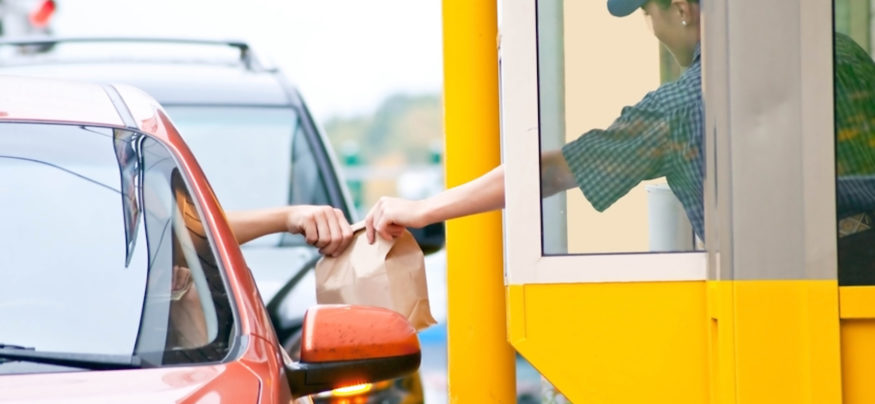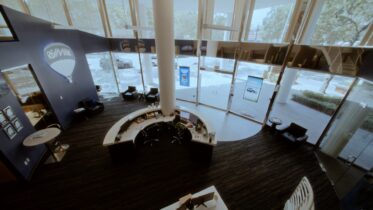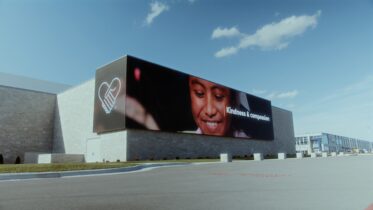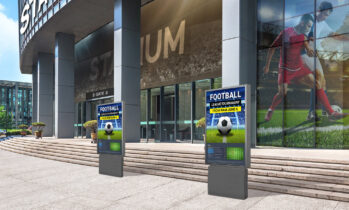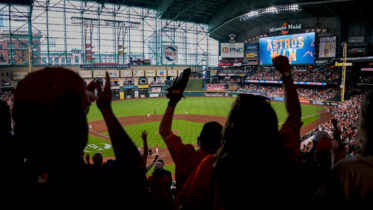Lowered operational costs may be the primary driver behind a shift by QSR operators from traditional print signs to digital displays in drive-thru lanes. Getting consumers to increase their order sizes, which boosts overall sales, is an obvious motivator for any franchise operator. But real-world experience, now backed up by research, suggests there are multiple cost-saving benefits of digital signage in the drive-thru. Going digital wins back hours spent by managers and staff updating and auditing menus, and it also saves on printing costs, reduces food waste and speeds up orders. This leads to more customers per hour in drive-thru lanes, which can represent as much as 70 percent of a restaurant’s day-to-day business, according to QSR Magazine.
A December 2016 commissioned study, The Total Economic Impact of Samsung Outdoor Digital Menu Boards, conducted by Forrester Consulting on behalf of Samsung, built a financial model based on a survey of 150 QSR operators and in-depth interviews with several customer. The survey responses and interviews about signage strategies and how chains operate were the foundation for a financial model that Forrester created on the operational costs and benefits of digital signage in drive-thrus.
Operators made it clear in their survey responses that they had ongoing challenges with managing print-based drive-thru menu boards. The survey found:
- 51 percent of respondents were concerned with high variable costs of static menu signage and keeping up with competitors’ technological innovations.
- 50 percent found it hard to make changes quickly to product, pricing and promotional content.
- 46 percent worried about ensuring menu pricing and promotional consistency.
- 45 percent were frustrated that analog solutions offered no ability to capture real-time customer data and develop analytics on customer behavior.
The model built out by Forrester was based around a fictional 150-location chain in the U.S. southeast, with 80 percent of the locations having drive-thru lanes. A digital drive-thru pilot for the chain would see 10 locations, each fitted with three 55-inch Samsung OH series outdoor displays, replacing the analog order boards. (QSR operators can also input their own chain’s information and download a customized cost-benefit analysis based on the model).
The Financial Benefits of Digital Menu Boards
Download the white paper on the cost savings of outdoor digital menu boards. Download Now
Reducing Costs
Changing to digital menu boards in drive-thrus eliminates the printing, shipping and labor costs associated with traditional analog posters. Across the 10-location pilot, employing outdoor digital signage saved them $1,381,644 over five years. The research found that QSR operators conservatively spend $2,500 a month per site on printing expenses just for its drive-thru menu displays. Respondents said they typically refresh graphics, pricing information, nutritional information and product offerings at least monthly, and sometimes even more often to factor in seasonal promotions. Even at that frequency, print is limiting and inflexible, as buyer interests change by time of day and are dependent on factors like weather conditions.
Changing out menus also requires time that many QSR managers don’t have. Based on interviews, Forrester researchers determined that going digital decreased the number of manager hours required to make drive-thru menu board changes by 2 hours per month. Controlled centrally off PCs, with readily available screen previews and reports, digital signage also significantly reduced field marketing labor costs and staff time involved with going onsite to audit the menu boards for pricing, nutritional information, product and promotional content for compliance and consistency. The research suggested that ensuring the right information was in place, where and when it needed to be, resulted in a decrease of 15 hours a month of time for those 10 pilot sites.
Limiting Waste
Drive-thru lanes are tough environments for marketing — with the biggest challenges being the bright midday sun and poor lighting in the evenings. When consumers can’t properly see the menus they’re ordering off, mistakes happen. However, changing to brightly lit, easily viewed digital displays was estimated to reduce food waste costs — brought on by more accurate orders — by 5 percent per month. Across the 10 locations, that saved $16,217 over five years.
Improved Perfomance
The financial modeling also suggests drive-thru lanes equipped with outdoor digital menu boards improve throughput, or the number of vehicles that roll through each hour. The model for the pilot drive-thru locations generates a 5.75 percent decrease in average drive-thru wait times. As a result, the composite organization was able to increase drive-thru customer traffic volume by 9.1 percent by going digital.
Positive Returns
The broader financial model suggested more timely and visually engaging promotions in the drive-thru would increase the conversion rate on promotional items, which increased restaurant profit. Bottom lines were boosted by using digital to more effectively upsell motorists at the order station. The model found the average order value of purchases at pilot location drive-thrus would go up by 2.5 percent by encouraging consumers to add additional items to their orders, such as french fries and sodas.
The total financial model found that investing in outdoor digital menu displays had a 196 percent ROI and 11-month payback period, based on boosts in sales and big savings in operational costs. That, combined with the reduced food waste, boosted customer traffic and decrease in labor make a very compelling case for going digital in the drive-thru.
Dunkin’ Donuts is boosting the customer experience in drive-thru lanes with three-screen outdoor menu displays.
